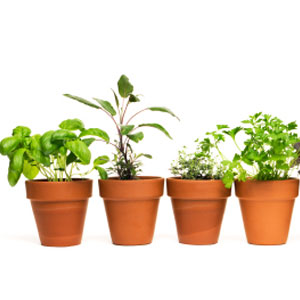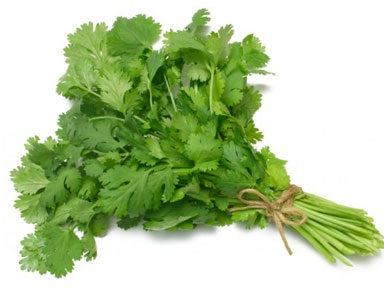
Have you always wanted a herb garden but have no idea where to start? Herbs are some of the easiest, most grateful plants to grow both outdoors and indoors. Whether you have a garden, balcony or only a windowsill, by following our simple guidelines you can also have a herb garden bursting with flavour and fragrance.
Planning your garden
Check which bottled herbs you have in the cupboard and which herbs you use the most often. From these select the herbs that you need the most. Firm favourites include: basil, rosemary, mint, parsley, coriander, lavender, thyme, sage and oregano.
Shopping for herbs
Some herbs (like basil, chives, lemongrass, parsley and thyme) do best when they are bought as seeds. It's best to buy other herbs like mint, rosemaryand tarragon as actual plants. Check with your local nursery, if you are unsure.
Claustrophobic herbs
Spacing your herbs the correct distance apart is also important, as overcrowded plants will go hungry. Speak to someone at your local nursery about how much space each type of herb needs around it. Herbs in general do not need a lot of space, one square metre is enough for about ten plants.
Don't let all your effort go down the drain
Drainage is very important for growing fresh herbs. Grow your herb garden in soil that drains well or improve the drainage by adding organic matter (compost, peat moss, composted manures). If you choose to plant your herbs in a container, make sure it has at least one hole in the bottom.
Soil solutions
Herbs will not grow in wet clay soil so use good-quality potting soil that will also ensure adequate drainage. Herbs grow best in slightly alkaline soil, so if you think your soil is too acidic, sprinkle some lime juice over it. The lime juice acts as a catalyst that will help the herbs make the most of the soil's nutrients.
Where will your garden grow?
The best site for your herb garden will be the sunniest and least windy spot in your garden or house. Group herbs according to their requirements. Place herbs that require lots of sun with like herbs and group shade loving plants together. Growing your herb garden in a big pot is a good idea, because then you can bring it inside in the winter and you can move it around to get the most sun. A window box or individual pots for each herb are also ideal.
Herbal sun worshippers
Location is the key to a successful herb garden. Most herbs grow best in full sun, but partial shade will often do. Herbs need as much sun as possible in order to reach their full capacity for flavour and fragrance.
The rule of the green thumb is for the herbs to get a minimum of four to seven hours of direct sun per day. If this is not possible, your herbs will still grow, but they might be a bit scraggly and disease prone, so give them a little extra attention.
Herbs that prefer full sun include:
- Basil
- Chives
- Dill
- Oregano
- Rosemary
- Tarragon
- Thyme
Herbs that prefer partial shade include:
- Chervil
- Lemon balm
- Mint
Herbs for every occasion
Are you crazy about Italian food or do you prefer French cuisine? Here are some tried and tested herbal gardens to suit your taste:
A taste of Italy
- Thyme
- Sweet Basil
- Oregano
- Majoram
- Italian parsley
A French connection
- Sage
- Chives
- Tarragon
- Chervil
- Parsley
Going green
- Celery
- Rocket
- Salad burnet
- Garlic chives
- Parsley
Heaven scent
- Pineapple sage
- Lemon thyme
- Lemon balm
- Rose scented geranium
- Lavender

Here are some of the most common and loved herbs and how they like to be treated:
Basil
Plant type: annual
Soil: rich, moist, well-drained soil
Location: sun or partial shade; can grow indoors
Days to maturity: 85
Uses: use fresh or dried in pasta sauces, stews, soups. Use fresh basil in salads or liquidise them with pine nuts for pesto. Sprinkle fresh basil on pizzas Handy tips: pinch the centres as plants grow to encourage bushiness
Coriander
Plant type: annual
Soil: sun or partial shade
Location: tolerates poor soil
Days to maturity: 90
Uses: the seeds and leaves can be used in curries, soups and stews or as a stuffing for chicken. Also used in cakes, cookies and breads.
Handy tips: Coriander is known as dhanya in South Africa. You can pick young leaves at any time. If you want to dry them, place them on a wire rack in a warm, airy place and then store in an airtight jar
Lavender
Plant type: perennial
Soil: moist, well-drained soil
Location: Sun or partial shade
Days to maturity: 60
Uses: dried leaves and flowers can be used in potpourris, cosmetics or in netting sachets to keep your linen smelling fresh
Handy tips: before the last flowers have opened, cut stems and hang in bunches upside down in a warm airy place. Once dry, remove the leaves and flowers and store them in an airtight jar. Lavender flowers are very fragrant and the herb can be used as an attractive landscape plant as well.
Oregano
Plant type: perennial
Soil: well-drained soil
Location: sun, can grow indoors
Days to maturity: 60
Uses: can be used in any Italian dish. Fresh or dried leaves add flavour to soups, stews and pasta sauces. Sprinkle over pizzas, salads, vegetables and meat or fish dishes
Handy tips: pick fresh leaves whenever you need them or cut stems just before the plant is in full flower. Dry them on a wire rack in a airy place then pick off the leaves and keep them in an airtight container
Parsley
Plant type: biennial, although usually grown as an annual
Soil: rich, moist soil
Location: sun or partial shade, can grow indoors
Days to maturity: 75
Uses: fresh leaves can be used in soups, stews and sauces, or as garnishing on almost any dish. Parsley is also a natural breath freshner.
Handy tips: Soak seeds for 48 hours to speed up germination
Rosemary
Plant type: tender perennial
Soil: well-drained soil
Location: sun or partial shade, can grow indoors
Days to maturity: 85
Uses: best in meat (especially lamb) or fish dishes and sauces. Also used in cosmetics
Handy tips: don't worry if it doesn't grow straight away, germination is often erratic
Sage
Plant type: perennial
Soil: rich, well-drained soil
Location: tolerates poor, dry soil and grows well indoors
Days to maturity: 75
Uses: fresh or dried in beef and fish dishes as well as stews. Good for stuffing and is a common sausage flavouring
Handy tips: well-drained soiled is a necessity
Thyme
Plant type: perennial
Soil: tolerates poor soil
Location: sun or partial shade, grows well indoors
Days to maturity: 70
Uses: fresh or dried in omlettes, bland soups and stews. Also a great stuffing for chicken or a flavouring for salads and roast vegetables
Handy tips: pinch back new growth to encourage bushiness
Other useful herbs to grow are aloe vera, comfrey, feverfew, lemon balm, marigold and rosemary.
Read more:
Maintaining your herb garden
A brief history of herbs




 Publications
Publications
 Partners
Partners










